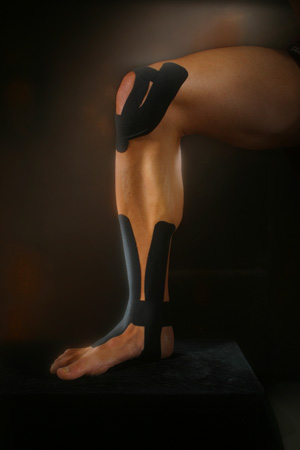Kinesio Taping
Kinesio tape is becoming an everyday sight in the sports world. It has been seen at the Olympic games, football matches, tennis tournaments, golfing events and even swimming. Everyone comments about the pink, blue, beige and black strips, but do you know what it is doing and how it works?
When an athlete, both amateur and professional, suffers an injury, the implications of that injury can not only affect their season but also their career. An athlete cannot afford to be laid up as this can affect their regular training regime and in turn, be unable to participate in events.
Unlike normal rigid tapes, Kinesio tape does not restrict movement of the affected area. Through the use of facilitating and inhibiting muscle groups, the tape not only allows normal movement, but it also provides support to the site of injury. Allowing unrestrictive movement means that the body is able to heal itself in the normal manner and does not cause any secondary complications, such as lymphoedema. The tape is also breathable, which means that the skin underneath will not become macerated which can lead to a portal of entry for bacteria causing infection.
One of the key aspects of the tape is that it is waterproof, which is why it can be worn during water activities such as swimming or diving. The tape may also be worn for up to 4 days without losing adhesion.
Kinesio tape is not just used for sports injuries, but can also help for lymphoedema (“swelling”) and bruising.
Lymphoedema is usually caused by an impaired lymphatic system. Damage to the lymphatic system can be caused by it not developing properly, or through trauma. This type of swelling most commonly affects the limbs.
Certain experts and Associations, working within the field of lymphoedema, have recognised Kinesio Taping as a key component in the management and control of this condition.


Lindsey Young BSc (Hons) MChs
HCPC Registered
01995 608777
01254 823183
07772 259576
